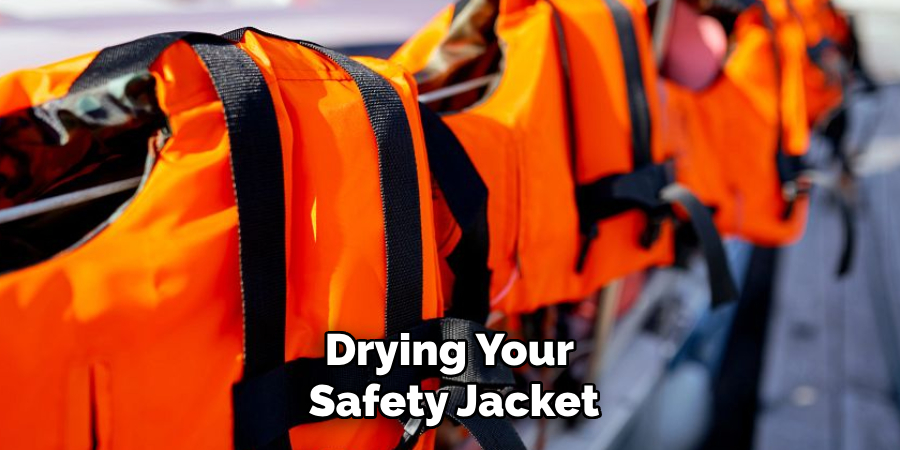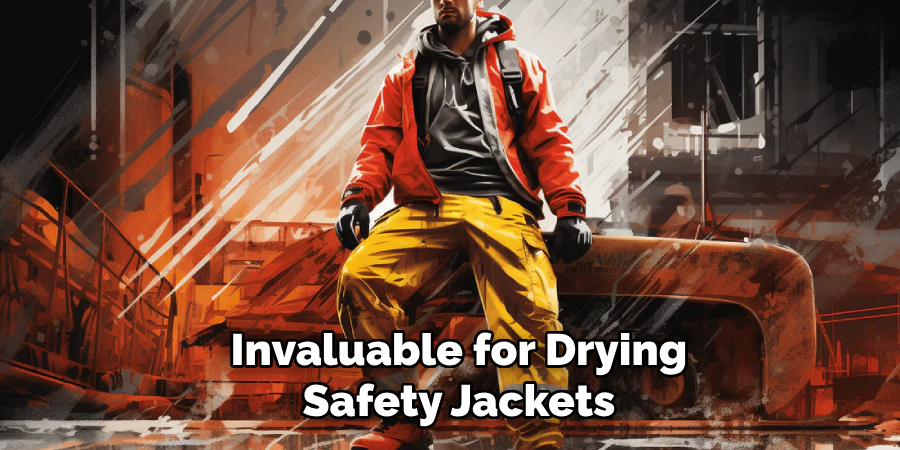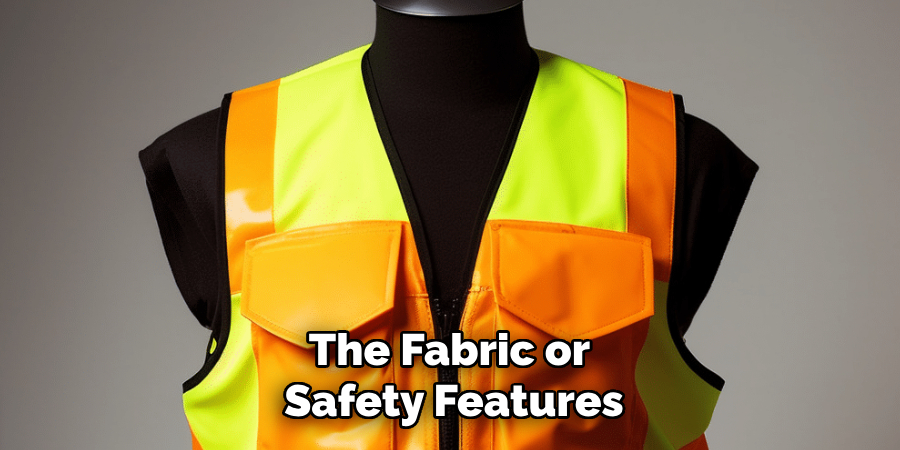After heavy rain, ensuring that your safety jacket is properly dried is crucial to maintain its durability, effectiveness, and comfort. A wet jacket can not only become uncomfortable to wear but may also lose some of its protective qualities over time if not cared for correctly. This guide will provide simple and effective steps on how to dry a safety jacket after heavy rain.

Importance of Drying Safety Jackets Promptly
Drying safety jackets promptly after exposure to heavy rain is essential to maintain their protective properties and ensure user safety. Prolonged moisture can lead to material degradation, such as weakening of the fabric or zippers, and may encourage the growth of mildew or odors. Additionally, wet jackets can compromise visibility features like reflective strips, reducing their effectiveness in low-light conditions.
Prompt drying not only preserves the jacket’s functionality but also enhances wearer comfort, ensuring it is ready for use when needed most. By acting quickly, you can prolong the lifespan of your safety jacket and maintain its reliability in critical situations.
Assessing Your Safety Jacket After Rain
Before drying your safety jacket, it is important to assess its condition to identify any potential damage caused by heavy rain. Start by inspecting the jacket for visible wear or tears on the fabric, as prolonged exposure to water can weaken certain materials over time. Check the seams and zippers for any signs of deterioration or rust, which can compromise the jacket’s integrity.
Also, examine the reflective strips to ensure they remain intact and functional; rain and dirt might reduce their visibility. Lastly, take note of any lingering odors or mildew, as these can indicate the need for more thorough cleaning or treatment before drying. A careful assessment will help you address any issues early and maintain the jacket’s effectiveness in protecting you during future use.
10 Methods How to Dry a Safety Jacket after Heavy Rain
1. Shake off Excess Water
Before beginning the drying process, shake the jacket vigorously to remove as much water as possible. This step prevents excess moisture from soaking deeper into the fabric and reduces the drying time. Pay attention to areas like cuffs and seams where water tends to collect. Shaking off water also minimizes the weight of the jacket, making it easier to handle.

2. Use a Clean, Absorbent Towel
Lay the jacket flat on a clean, absorbent towel and gently press down to soak up moisture. Avoid rubbing, as this can damage delicate fabrics or reflective elements. Roll the towel with the jacket inside to extract even more water. This method is ideal for initial drying before moving on to other techniques.
3. Hang the Jacket Properly
Hang the safety jacket on a sturdy hanger in a well-ventilated area. Use a padded or broad-shouldered hanger to maintain the jacket’s shape and prevent stretching. Ensure the jacket is hung away from direct sunlight or heat sources, as these can degrade certain materials. A properly hung jacket allows for even airflow and efficient drying.
4. Air-Dry in a Shaded Area
Air-drying is one of the safest methods for drying a safety jacket. Place the jacket in a shaded, breezy area to prevent prolonged exposure to UV rays, which can weaken fabrics and fade reflective strips. Use a clothesline or drying rack to ensure even drying. Air-drying is gentle and preserves the jacket’s protective properties.
5. Use a Fan for Increased Airflow
Position a fan near the jacket to enhance airflow and speed up the drying process. Ensure the fan is set to a low or medium speed to avoid disturbing the jacket’s position. This method is particularly effective in indoor settings where natural airflow may be limited. A fan helps to prevent musty odors caused by prolonged dampness.
6. Employ a Dehumidifier
In humid environments, a dehumidifier can be invaluable for drying safety jackets. Place the jacket in a small, enclosed room with a dehumidifier running. The device extracts moisture from the air, creating optimal drying conditions. This method is especially useful for waterproof or thick jackets that take longer to dry.
7. Utilize a Clothes Dryer with Care
If the jacket’s care label permits machine drying, use a clothes dryer on a low or delicate heat setting. Place the jacket inside a mesh laundry bag to prevent damage to zippers, reflective strips, or other features. Add a few clean, dry towels to the dryer to reduce drying time and ensure even heat distribution. Always monitor the drying process to avoid overheating.

8. Dry with a Hairdryer on Low Heat
For targeted drying, such as cuffs, collars, or seams, use a hairdryer set to low heat. Hold the hairdryer several inches away from the fabric to prevent overheating. Move the hairdryer in a sweeping motion to distribute the heat evenly. This method is ideal for spot-drying areas that remain damp after other drying techniques.
9. Place Near a Radiator or Heater
If using a radiator or heater, ensure the jacket is placed at a safe distance to avoid direct contact. Excessive heat can damage fire-resistant coatings or reflective materials. Use a drying rack positioned near the heat source to allow indirect warmth to dry the jacket gradually. Rotate the jacket periodically to ensure all areas dry evenly.
10. Inspect and Store Properly
Once the jacket is completely dry, inspect it for any signs of damage or lingering moisture. Ensure all zippers, pockets, and seams are dry before storing the jacket. Store it in a cool, dry place away from direct sunlight and humidity. Proper storage prevents mold, mildew, and degradation of protective features.
Maintenance and Upkeep
Proper maintenance and regular upkeep are essential to ensure your safety jacket remains effective and durable over time. Start by following the manufacturer’s care instructions, which outline specific cleaning methods and precautions for the jacket’s materials. Wash the jacket only when necessary, using mild detergent and cold water to prevent damage to reflective strips and waterproof coatings.
Avoid using bleach or harsh chemicals, as these can weaken the fabric and compromise safety features.
Inspect the jacket frequently for signs of wear and tear, including frayed seams, damaged zippers, or faded reflective elements. Promptly repair any minor issues to prevent further deterioration. Consider applying a waterproofing spray periodically to reinforce the jacket’s ability to repel water. Additionally, store the jacket in a clean, dry space away from direct sunlight and extreme temperatures, which can degrade its materials over time.
By committing to a consistent maintenance routine, you can extend the lifespan of your safety jacket and ensure it continues to provide reliable protection in demanding conditions.

Alternative Methods and Tips
If the conventional drying methods mentioned are unavailable or unsuitable, there are alternative approaches and tips you can try to ensure your safety jacket dries effectively and maintains its integrity:
1. Use Silica Gel Packets for Quick Drying
For smaller damp areas or light moisture on your jacket, silica gel packets can be a simple solution. Place several packets inside the jacket’s pockets or near wet spots to absorb moisture. This method is portable and especially handy in situations where no other drying tools are available.
2. Opt for a Portable Clothes Drying Bag
A portable electric drying bag can offer a controlled environment for drying your safety jacket. These bags circulate warm air evenly, preventing any damage to delicate materials or reflective elements. They are compact and ideal for situations where space is limited or outdoor drying conditions are poor.
3. Rotate and Flip the Jacket Regularly
If you’re air-drying the jacket, periodically rotate and flip it to ensure all areas dry evenly. This tip is especially useful for jackets with multiple layers or thick fabrics, which may trap moisture in hidden spots.
4. Layer with Absorbent Materials
Sandwich the jacket between layers of dry, absorbent materials such as microfiber towels or cloths. Gently press down to pull out trapped moisture. This technique can be used as a quick-dry alternative if tools like fans or dryers aren’t available.
5. Avoid Overloading Drying Areas
When drying multiple items, ensure the safety jacket has enough space for proper airflow. Crowded racks or hangers can limit ventilation, prolonging the drying process and potentially leading to mildew.
6. Test Small Areas Before Using Heat
Before employing any heat-based method, like a hairdryer or clothes dryer, test it on an inconspicuous area of the jacket to ensure it does not damage the fabric or safety features. This precaution helps protect against material shrinkage or discoloration.
7. Utilize Natural Sunlight Wisely
While direct sunlight is not advisable for long periods, brief exposure during early morning or late afternoon can help speed up the drying process without causing material degradation. Monitor the jacket carefully to prevent overexposure.

Conclusion
Properly drying and maintaining your safety jacket is crucial to preserving its durability, functionality, and protective features. By following the recommended drying methods, avoiding excessive heat, and adopting alternative approaches when necessary, you can ensure your jacket remains in optimal condition. Regular inspections and mindful storage practices further contribute to its longevity, giving you reliable performance in demanding environments.
Thanks for reading, and we hope this has given you some inspiration on how to dry a safety jacket after heavy rain!

